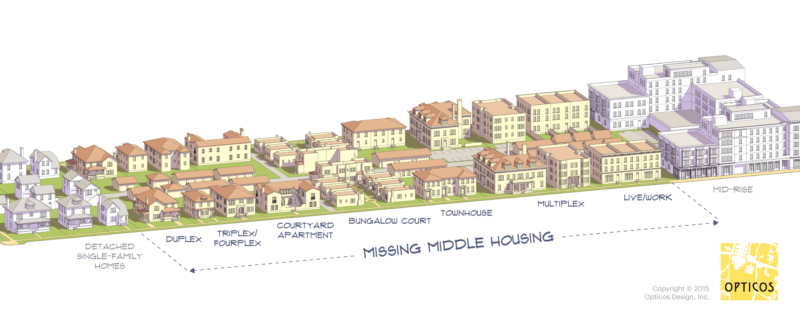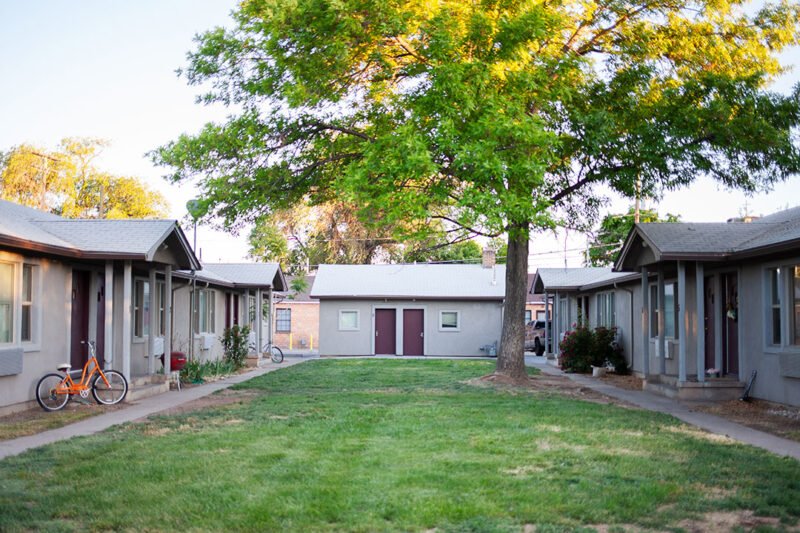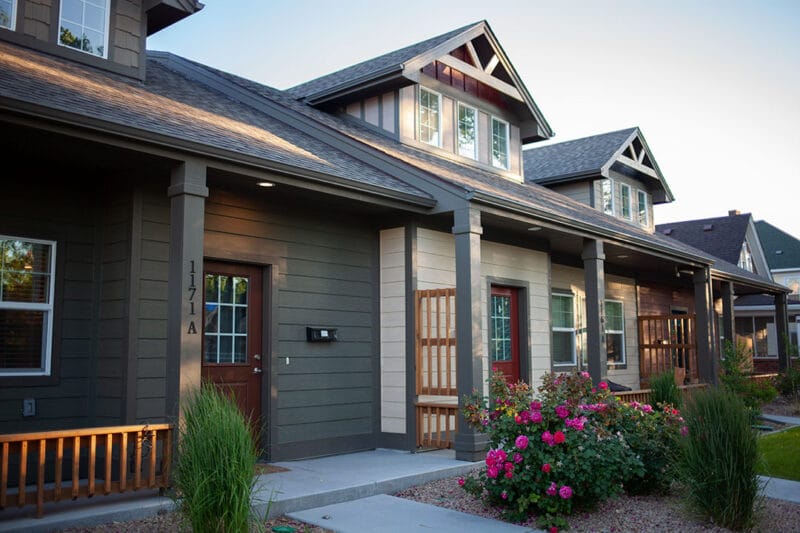Arguably one of the greatest creations in recent years is mobile food ordering and delivery. These apps have proven even more useful during COVID-19.
Apps such as GrubHub, UberEats, and DoorDash, allow users to order food from a variety of restaurants and have it delivered. Aside from curing my late-night pizza cravings, these apps are great because they encourage local restaurant support during this pandemic by allowing for contactless delivery, and the purchaser never has to leave their home.
Additionally, these apps provide jobs for those who need the help right now, such as my 18-year-old sister who (non-ceremoniously) graduated high school just a few weeks ago. In need of a laptop for college with little job options to pursue, she started delivering for DoorDash. I’ve been keeping her company as she delivers food around town, and I was amazed by the amount of missing middle housing we delivered to.
Missing middle housing are building types, such as duplexes, fourplexes and bungalow courts. They “pepper” a neighborhood and make it interesting, while also providing diverse housing options to support a variety of people at various income levels and stages of life. They are diverse in terms of scale, price, and form.
We see how hard the pandemic is hitting our communities, and it underscores the need for more available affordable housing options. Options like missing middle housing, over time, can provide housing for middle-income and lower-income people to afford without being one paycheck away from housing disaster.

Economically, missing middle supports the community by allowing more people to live there. This is especially helpful in resort communities or highly desired areas because a diverse population can enjoy the town and call it home. For many communities in the West, missing middle housing also supports a more vibrant downtown economy because this housing allows people to live in or close to downtowns and Main Streets.
It’s not uncommon to see missing middle housing, but many don’t even realize they’re looking at it. They blend into a neighborhood quite easily, and it takes a thoughtful eye to spot them.
Curious about the types of housing I’ve been seeing around town and how they blend with their surrounding? Follow along on Google Earth by clicking the “virtually experience” button below each image.
Townhomes + ADUs
These townhomes are newly built and are some of the first of their kind in this area. Plus, each unit has an accessory dwelling unit (ADU) in back (check them out in the virtual link below)! Although they’re five blocks away from the Downtown core, they’re still on Main St. and in close proximity to Downtown.
Attached Bungalow Courtyard
Bungalow courtyards are a great option for people who want a single-family home without the price. This style of missing middle housing is small scale, and gives a more “homey” feel than larger, multi-family housing. Although these homes are slightly older, they provide a unique place for residents. and they all share a “courtyard” in the center.

Multiplex
Multiplexes provide apartments at a lower-scale. This building holds 12 units within its three stories. Because it’s not an apartment complex, it blends in nicely with the mix and match type feel of the neighborhood.

Triplex
This triplex is one of many. A few more of these same triplex builds sit on either side of it. There’s also other missing middle homes on the same street.

Attached Townhomes
These townhomes are in their own neighborhood of townhomes! Driving down the street, this area feels like a neighborhood with lots of green space. However, it’s composed entirely of look-a-like townhomes. About 10 of these builds are tucked in off the street.

Housing


